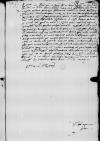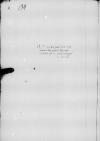List #2165
Ioannes DANTISCUS do Tiedemann GIESESchmolainen (Smolajny), 1539-06-16
Regest polski:
Poprzedniego dnia Dantyszek wysłał adresatowi trzy łososie oraz list, otrzymany od wojewody malborskiego [Jerzego Bażyńskiego]. Odnośnie podziału godności [po śmierci Ludwika Mortęskiego] wojewoda doradza to samo, co Giese, pragnąc, aby Dantyszek w imieniu wszystkich [członków Rady Pruskiej] napisał w tej sprawie do króla [Zygmunta I]. Dantyszek jednak obiecuje uczynić to dopiero po tym, gdy [radcy] zasygnalizują sprawę królowi w liście otwartym, tak aby było jasne, że nie jest to jego osobista inicjatywa, lecz stanowisko wszystkich [panów pruskich]. Ostrzega też, że zwłoka może przysłużyć się temu, który usiłuje wejść do ich grona [Jan Sokołowski?].
Właśnie przybył do Dantyszka administrator dóbr olsztyńskich [Achacy Trenck], który zmierza do Fromborka. Mówi on, że dzień wcześniej wysłał list do Giesego.
Rękopiśmienne podstawy źródłowe:
Pomocnicze podstawy źródłowe:
Publikacje:
| ||||||||
Tekst + aparat krytyczny + komentarz Zwykły tekst Tekst + komentarz Tekst + aparat krytyczny
Reverendissimo in Christo Patri, domino
Reverendissime in Christo Pater et Domine, frater et amice carissime ac honoran(de) or honoran(dissime)⌈honoran(de)honoran(de) or honoran(dissime)⌉.
Salutem et fraternam commendationem.
Heri sub ipsa meridie tres captos pisces, quos usu salmones vocant, et litteras[1] magnifici domini
Aliud in praesenti non restat avocorque ab hac scriptione adventu venerabilis domini
Eandem Dominationem Vestram Reverendissimam diutissime prosperrime valere cupio summopere.
Ex
Reverendissimae Dominationis Vestrae frater integerrimus


 p. 194
p. 194